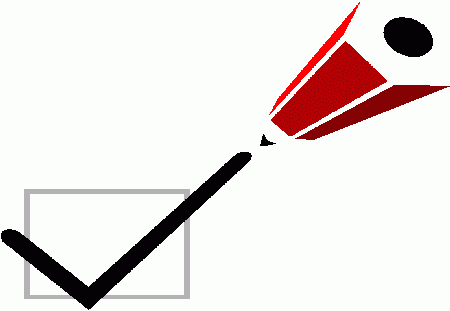|
CAPTURING EVIDENCE (cont.)
 This means we must document several items as we research our family including: This means we must document several items as we research our family including:
- Records which prove birth, marriage, death, divorce, etc.
- Additional information beyond what was intended in the document,
- Historical, cultural, and social events pertaining to an individual,
- Associates, neighbors, collateral relatives and others who might provide clues to the next generation.
- Any details which prove our conclusions.
- Sufficient information to pursuade others to believe the assertions made.
- A statement of results upon completion of the research that would pull together the evidence into one final conclusion.
- And a list of sources used with their repositories stated.
Several methods were suggested in this week's reading for recording information searched and found, or not found. They included making a photocopy, extract, abstract, transcription, or a scanned image of the document.
Today we can copy and paste our notes in chronological order in our notes (also called "general notes") area of the genealogy computer software program we are using because this is most helpful while doing research. At the same time it places ou materials in order for future publishing. We can even link (or attach) an image of the document to a person or a couple (depending on which program we are using). In some cases we can just keep electronic data in files on our computers. See a sample of the PAF notes area below. 
By now you should have selected one genealogy computer program to use. I will be giving you computer tips throughout this class, but you won't be graded on computer skills as much as you will be graded on an example of connecting generations of a family that you have properly sourced back to the 1850 time period. You will find that a genealogy computer program will save you lots of time.
However, genealogy computer programs have their own problems we must overcome.
- We must follow a �programmers� rules for formatting our materials if the program does not support a genealogist's personal styles.
- Records coming out of commercial genealogy computer programs are not modified easily to conform to a different publishing system when ready to produce a family history.
- Naming conventions differ world-wide so we must adapt our programs to fit that convention. For example, Hispanic research involves using both the mother's maiden name as well as the father's surname as the child's last name.
- Calendaring conventions differ world-wide.
- The meaning of words differ. In Colonial days in America relationship terms differed. For example, the term son-in-law in a will could be "son-by-law" or a step-son. Without an understanding of the customs of the area at a particular time period, a wrong relationship assumption might be made.
- Different computer systems transfer data differently. How can we make sure that none of our source materials are lost when we pull data into a publishing program, for example, at the end of our research period? If we enter our notes in various areas of our genealogy computer program, how can we be sure that everything will transfer to others?
We put the data into our notes fields.
As an example of what genealogists must contend with, let's consider the two major areas for entering sources in the free genealogy computer program many of you are using in class, the Personal Ancestral File Program. It has two places to put your notes: a general notes area, and a source notes area. People who do alot of genealogy research in just a small number of sources like to use source notes as a place to:
- Justify conclusions based on what was recorded,
- Call attention to specific detail rather than everything listed in a document,
- Keep the flow focused on a storyline without disruption of supportive text,
- Build a repository data base, and eliminate duplicate typing of places, and
- Keep track of positive sources searched.
General notes (or plain notes that represent an unlimited number of pages of notes after each individual), on the other hand, provide places for researchers to:
- Elaborate on vital events,
- Accurately list additional clues provided in other documents,
- Chronologically list historical events,
- Geographically list historical events and the people involved in them,
- Report indepth final results after the research is completed.
General notes can also provide a place to:
- Keep track of negative and positive searches while research is on-going,
- Substantiate or reveal conflicts between similar or dissimilar information (i.e. a birth can be verified by a census, a death record, a Bible record, or a Social Security record�dates may agree or not).
- Allow the life history to be reviewed in chronological and historical detail, speeding up the research process by revealing clues and creating a mental map on individuals and families.
- Focus on the research process, not the presentation of the results.
For the information to be most effective and most correct, documentation is entered concurrent with the research. The format for data entry is best determined from the beginning.
Another essential part of documentation is "research planning." A picture of a Research Planner was given on page 4-5 of The Complete Beginner's Guide.... You should be able to explain the purposes of a research planner and be able to use it.
Both documenting what you have already researched, as well as planning your next research steps, can guide you to new sources for extending your pedigree. Page 8-4 gives a good guide to sources for extending your research and can be used in conjunction with this research planner. Some students call it their "to do list."
 As we enter information into our genealogy computer program (it doesn't matter which one we use), amazing things happen. As we enter information into our genealogy computer program (it doesn't matter which one we use), amazing things happen.
- We learn how to use the program better.
- We find out that the computer program solves our problems for us.
- We think of other things we could be doing to solve our problem.
But the best of these three is the last option.
|